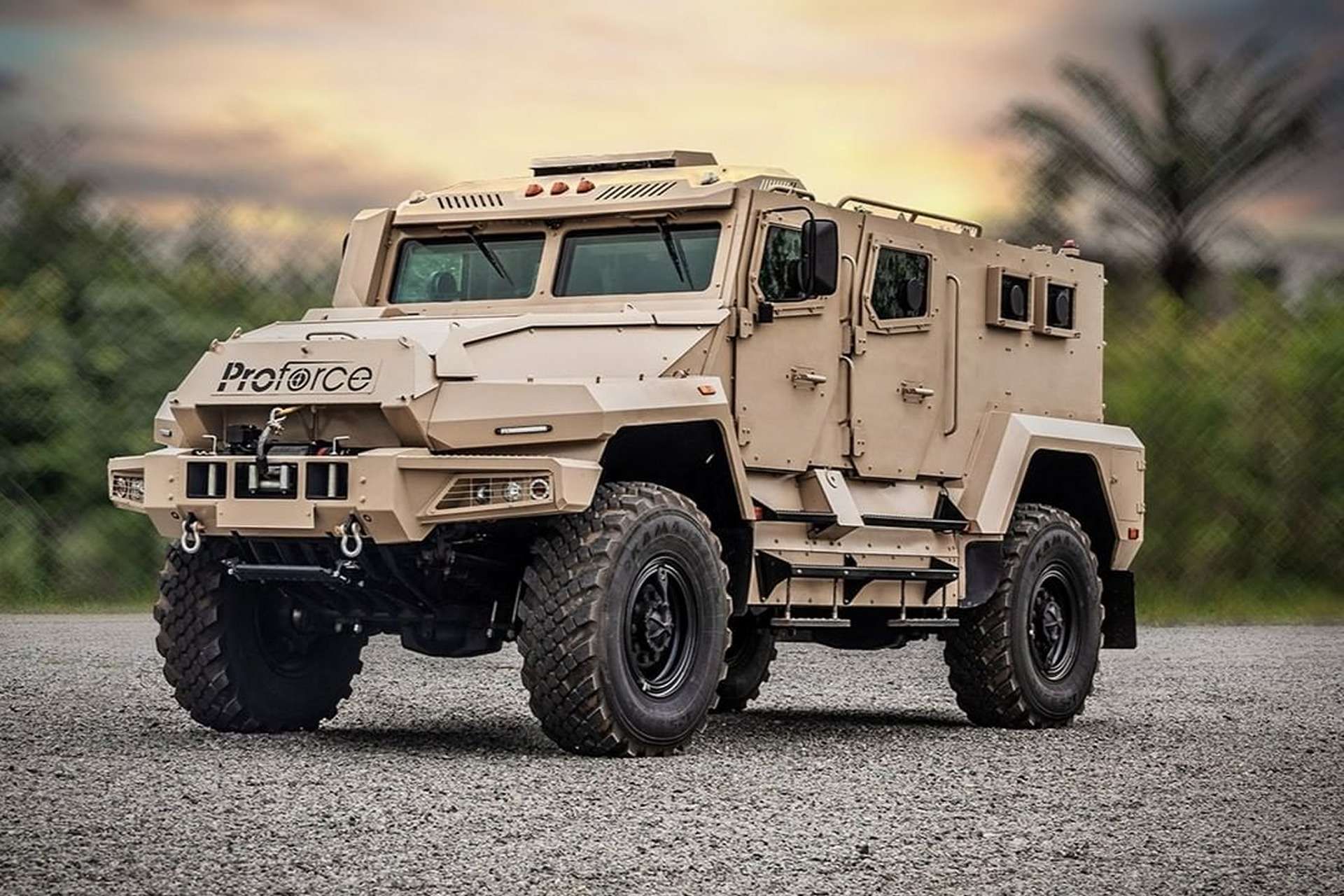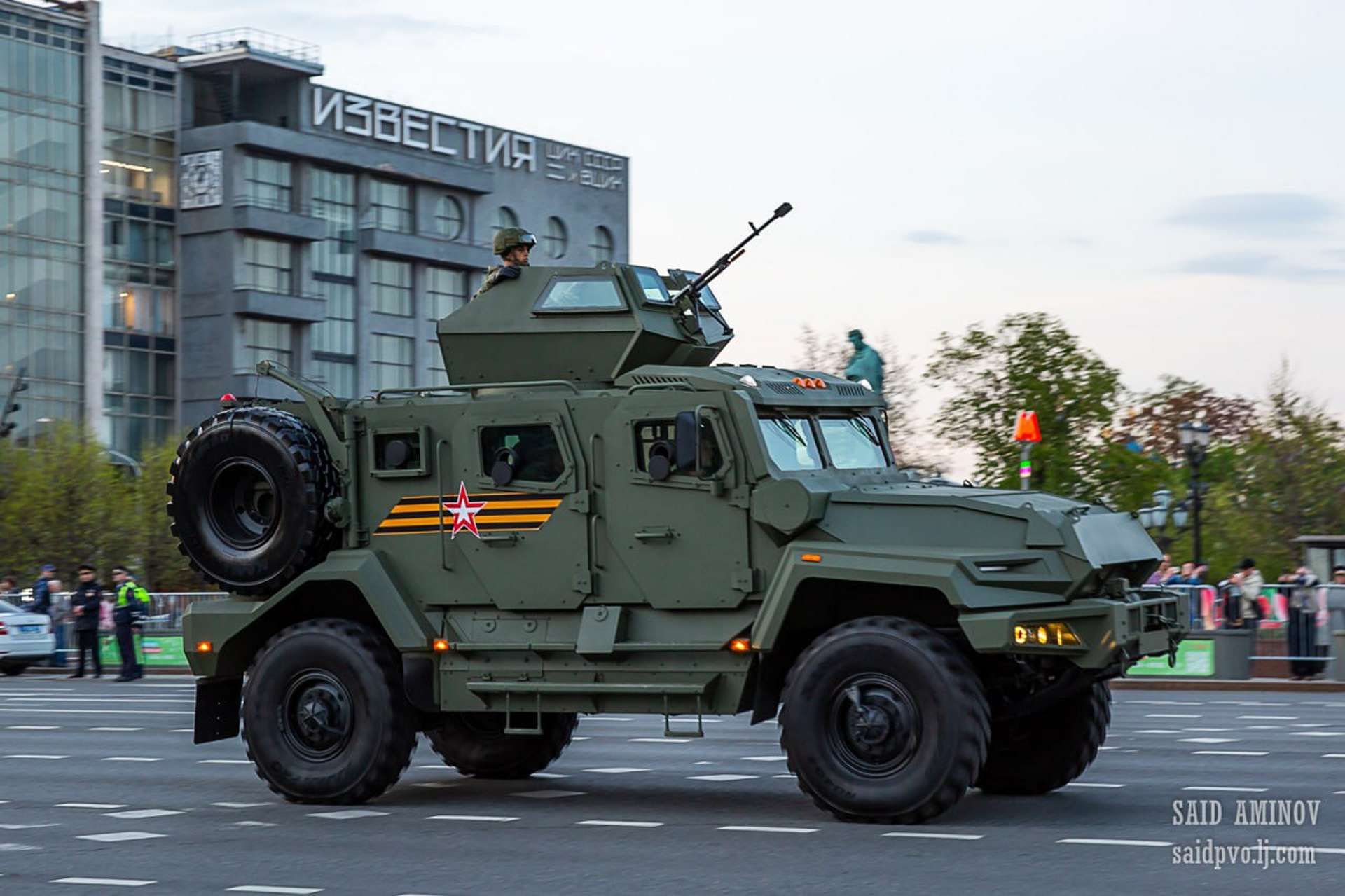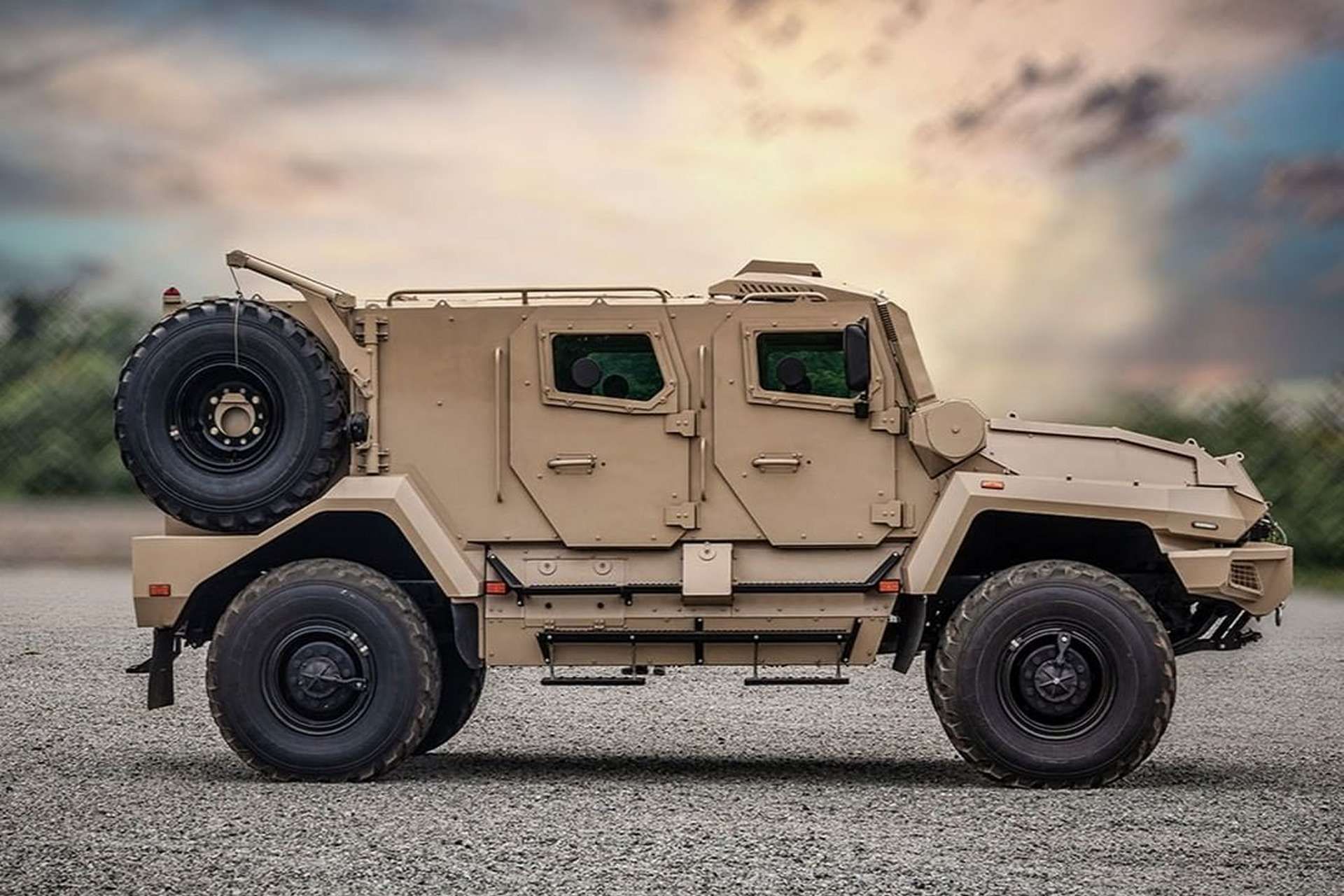Breaking News
Nigerian Proforce's new PF Hulk likely based on Russia's Spartak MRAP vehicle.
On July 25, 2024, the Nigerian company Proforce Defence unveiled the PF Hulk, its new multipurpose MRAP (Mine-Resistant Ambush Protected) vehicle. However, upon closer examination, the PF Hulk is likely a licensed production of the Russian AMN-590951, known as Spartak. This is not the first instance of Russian MRAP vehicles being produced under license by foreign companies, as demonstrated in India with the Typhoon-K.
Follow Army Recognition on Google News at this link

Upon closer examination, the PF Hulk appears to be a licensed production in Nigeria of a Russian MRAP, the AMN-590951, known as Spartak, as the PF Hulk and Spartak are strikingly similar. (Picture source: Proforce and Vitaly Kuzmin)
The Nigerian company Proforce Defence introduced its latest armored personnel carrier, the PF Hulk. According to its presentation, this multipurpose MRAP (Mine-Resistant Ambush Protected) vehicle is designed to transport personnel and military supplies while providing the necessary protection. It supports the installation of weapon systems and specialized equipment and can tow trailed systems. With a gross vehicle weight (GVW) of 15 tons and a protection level of 3a/3b according to STANAG 4569 standards, it can carry up to 10 personnel. The PF Hulk MRAP is equipped with a 360-horsepower engine, a 5-speed mechanical transmission, and has a fuel endurance of 1,000 kilometers.
According to the brochure of Proforce distributed during the 3rd African Air Force Forum held in Abuja last May, the gross weight of the armored vehicle is 14,500 kg, and it is equipped with a YaMZ-536 turbocharged diesel engine. The PF Hulk features a ground clearance of 400 mm, a length of 6,500 mm, a width of 2,550 mm, and a height of 2,800 mm.
Upon closer examination, the PF Hulk appears to be a licensed production in Nigeria of a Russian MRAP, the AMN-590951, known as Spartak. The PF Hulk and Spartak are strikingly similar, reflecting the current military and geopolitical relations between Nigeria and Russia, marked by a recent Military-Technical Cooperation Agreement, which includes the supply of military equipment, training, after-sales services, and technology transfer. This agreement, replacing a previous one from 2001, signifies an intent to deepen military collaboration. Nigerian Defense Minister Major General Bashir Salihi Magashi and Russian Federal Service for Military-Technical Cooperation Director Dmitry Shugaev officiated the signing.

With a gross vehicle weight (GVW) of 15 tons and a protection level of 3a/3b according to STANAG 4569 standards, the PF Hulk can carry up to 10 personnel. (Picture source: Proforce)
Nigeria’s military ties with Russia form part of a broader strategy to diversify its defense procurement sources, especially in light of restrictions and hesitations from Western countries due to human rights concerns. Nigeria uses some Russian fighter jets and helicopters alongside equipment from Western nations. Economically, Russia seeks to strengthen its ties with Nigeria. During recent forums and summits, Russian President Vladimir Putin emphasized potential increased trade and economic cooperation with African countries, including Nigeria. Discussions have covered various sectors such as food security, agriculture, and the resuscitation of the Aluminium Smelter Company of Nigeria (ALSCON) with the involvement of the Russian Aluminium Company UC RUSAL.
Geopolitically, the partnership between Nigeria and Russia is part of a larger Russian strategy to expand its influence in Africa amidst global geopolitical shifts, particularly with the growing rivalry between major powers like the United States and China. This relationship provides Nigeria with military and economic support while giving Russia a strategic foothold in Africa. The AMN-590951 Spartak, from which the PF Hulk appears derived, is a light armored vehicle developed by the Russian military and presented for the first time during the Army 2019 forum. Used by Russian special forces during the invasion of Ukraine, the Spartak is designed for the Russian National Guard and other internal troops. Developed based on Russian experiences in Syria, it emphasizes crew protection and vehicle modularity.

The AMN-590951 Spartak, from which the PF Hulk appears derived, is a light armored vehicle developed by the Russian military and presented for the first time during the Army 2019 forum. (Picture source: Said Aminov)
The Spartak features reinforced front and roof armor to withstand 12.7 mm fire, with additional protection to resist 14.5 mm rounds. It is constructed on an MRAP principle with a V-shaped hull to withstand blasts of 6 to 8 kg of TNT. The Spartak is typically armed with a 12.7 mm Kord machine gun mounted on a 360° protected turret but can also accommodate other weaponry such as PK/PKP machine guns or AGS-17/30/40 automatic grenade launchers. According to VPK, the Spartak can also be equipped with a remote-controlled turret like the Arbalet-DM.
The Spartak's development includes several variants, such as the AMN-59097, which features a larger chassis and additional axle for increased load capacity. This version can serve various roles, including logistics and infantry support, with configurations like an infantry fighting vehicle with a 57 mm semi-automatic cannon or a multiple rocket launcher system. The AMN-590951's compact size and mobility make it suitable for tasks such as patrolling, escorting convoys, and performing surveillance missions.

Nigeria and Russia recently signed a Military-Technical Cooperation Agreement, which includes the supply of military equipment, training, after-sales services, and technology transfer. (Picture source: Proforce)
This is not the first instance of a Russian MRAP being produced under license by a foreign company. As reported by Army Recognition on July 4, 2024, India's state-owned Armoured Vehicle Nigam Limited (AVNL) was set to license-produce the Russian K-53949 Typhoon-K, a 4x4 MRAP vehicle developed by Remdiesel, a subsidiary of KamAZ. This follows the completion of trials, and the project is now awaiting official orders. Official photographs have shown the Typhoon-K MRAP in India within a convoy, alongside other AVNL Mines Protected Vehicles (MPVs) in both 4x4 and 6x6 variants.
The K-53949 Typhoon-K is designed for the safe transportation of troops and military cargo in areas with a high risk of mines, featuring a V-shaped hull to deflect blast impacts. Powered by a 350-horsepower Cummins diesel engine coupled with a six-speed automatic transmission, the vehicle can achieve speeds up to 105 km/h and has a range of approximately 1,000 km. The Typhoon-K can be equipped with a remotely controlled weapon station capable of mounting various machine guns and grenade launchers. Its armor protects against 14.5mm armor-piercing rounds and can withstand explosions of up to 10 kg of TNT under the wheels and 8 kg under the floor. This trend of producing Russian military vehicles under license in other countries highlights the international appeal and reliability of Russian MRAP designs.


























